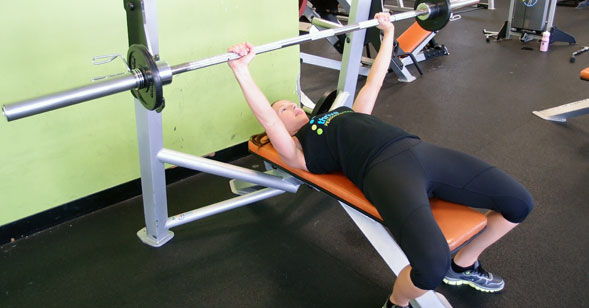
Powerlifting – Deconstructing the Bench Press
It’s almost time for me to compete at the Australian Powerlifting Championships. It’s now under two weeks away. I’ve been training hard and hopefully in a few weeks I will have a positive post about how I went. In the meantime, I thought I would share with you my second instalment of my powerlifting series. In the first post I went over the technique of the squat. Today I will break down the correct way to perform a bench press.
Set-up
Set the rack height so that you can comfortably get a good grip on the bar, and if you don’t have a spotter, set the height so that you can easily unrack the bar yourself. (Note: If you are going to do heavy lifting, it is always best to have at least one spotter). Your grip can vary from a narrow grip to a wide grip. In competition, it’s best to go as wide as you can (and as wide as the rules stipulate), as this will mean your lift will be shorter, which will equal a heavier lift. It’s best to try out a few grips to see what works best for you – however in training, you should use all grips (narrow, medium and wide), as they all help in building strength.
Lie back on the bench so that your eyes are inline with the bar, take your grip and position your feet in the most optimal position for you. This is a position where you can generate a good arch in your back, without lifting your butt off the bench. Like with the hand grip, feet position will vary from person to person. Again, it is best to play around with it to find what works best for you.
Un-rack the bar, and keeping your arms straight bring it inline with your sternum/lower chest. In this position, focus on squeezing your shoulder blades together, arching your back, squeezing your butt, and driving your feet into the ground. This will set you up for a strong descent.
The descent (eccentric phase)
Maintaining the strong position outlined above, take a deep breath and hold it. Now, bring the bar down towards your chest in a straight line. As you bring it down, focus on squeezing your shoulder blades and pushing out your stomach to help maintain your arch. You should bring the bar all the way down to touch your chest.
The ascent (concentric phase)
In competition, you need to wait for the referee’s call before you can press the bar back up, which means the bar stays touching your chest for about one second. You don’t need to do this for all lifts, but it’s important to know, as the pause will affect how much you are able to lift.
Once the bar touches your chest, or after pausing for a second, push the bar back up, maintaining the strong body position – tight back, strong arch, squeezing glutes, and driving your feet into the ground. Once your arms are locked out at the top (i.e. arms straight) re-rack the bar or descend again for another lift. Let your breath out at the top of your lift.
Watch and learn
For a visual demonstration of what I have outlined above, watch the videos below. The first video shows my natural bench technique with a narrow feet position. The second video has a wider feet position.
